ARTISTS
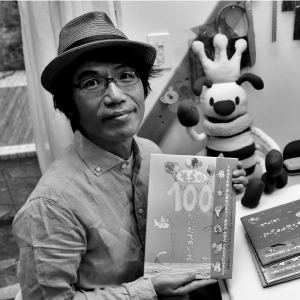
Toshio Iwai
Children’s book Author and Illustrator / Media artist
Toshio Iwai was born in Aichi prefecture, Japan, in 1962. Iwai started his career making flipbooks in his childfood and began making experimental animations in 1981, moved on to working with pre-cinematic toys such as flipbooks and zoetropes, and his interests then shifted to art produced on computers. In 1985, while Iwai was still a student, his installation Time Stratum won the High Technology Art Exhibition Gold prize. He also won the grand prize at the 17th annual Modern Japanese Art Awards, becoming the youngest artist ever to win the award. In 1987, following the completion of his work at Tsukuba University’s Plastic Art and Mixed Media master’s course, he went on to exhibit his interactive art at shows both in Japan and overseas, winning wide acclaim. In 1991-92, he was based at the San Francisco Exploratorium. In 1994-95, he was a visiting artist at ZKM in Karlsruhe, Germany, where his work included a major one-man show. In 1990s, Iwai had been particularly interested in the relationship of sound and image. One major result of this interest was the performance in collaboration with Ryuichi Sakamoto. This performance won the Golden Nica of the Interactive Art Division at the 1997 Prix Ars Electronica in Linz, Austria. Iwai is a multitalented creator whose works also include the creation of characters and computer graphic designs for Fuji Televisions, “Einstein TV” and “Ugo Ugo Lhuga” TV programs, as well as computer game software such as Otocky, Simtunes and Electroplankton. He has also co-developed an electronic musical instrument TENORI-ON with YAMAHA Corporation. On the other hand, he has branched into non-computer creations, such as handmade toys, and picture books for children.

exonemo
Artist unit
The artist unit “exonemo” (by SEMBO Kensuke and AKAIWA Yae) was formed in 1996 on the Internet. Their experimental projects are typically humorous and innovative explorations of the paradoxes of digital and analog computer networked and actual environments in our lives. Their The Road Movie won the Golden Nica for Net Vision category at Prix Ars Electronica 2006. They have been organizing the IDPW gatherings and “The Internet Yami-Ichi” since 2012. They live and work in New York and became a member of the first museum-led incubator NEW INC since 2015.
Artists’ website: exonemo.com
Photo: Niko
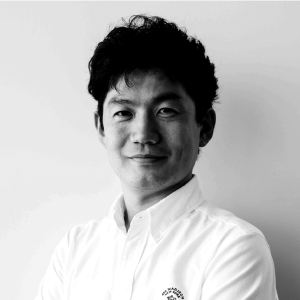
Koichiro Eto
Media artist / Chairman of the NicoNicoGakkai Beta Executive Committee / Senior Researcher at the National Institute of Advanced Industrial Science and Technology (AIST).
PhD (Information Science and Technology). Graduated from Keio University Graduate School of Media and Governance in 1997. Graduated from University of Tokyo Graduate School of Information Science and Technology in 2010. We won the Grand Prix of Prix Ars Electronica in 1997 (as sensorium team). I participated the team of “A Hands-on Model of the Internet” at the National Museum of Emerging Science and Innovation in 2001. I launch the NicoNicoGakkai Beta Society in 2011. The NicoNicoGakkai Beta won the Prix Ars Electronica and Good Design Award Best 100. My research theme is collective intelligence and cooperation on the Internet. Major publications, “Patterns, Wiki, and XP”, “I tried to research the NicoNicoGakkai Beta”, “Evolving Academia”.
Artist’s website: http://eto.com/
Photo: Yuji Honda
Nam June Paik
Nam June Paik was a Korean American artist, born in 1932 in Seoul. Paik is recognized as the pioneer of video art. In 1949, he moved to Hong Kong, and then Japan. Graduated from the University of Tokyo in 1956, Paik moved to Germany to study modern music. There he met John Cage and George Maciunas and joined the Fluxus movement. In 1963, Paik had his first solo exhibition entitled “Exposition of Music – Electronic Television” at Galerie Parnass at Wuppertal, Germany, in which he presented an installation composed of thirteen televisions.
After immigrating to the US in 1964, Paik expanded his engagement with video and television, from sculptures such as TV Buddha (1974) to installations such as TV Garden (1974) and a live global satellite broadcast, Good Morning, Mr. Orwell (1984). Paik died in 2006.
Rafael Lozano-Hemmer
Rafael Lozano-Hemmer is a Mexican-Canadian artist born in Mexico City in 1967. After obtaining a bachelor’s degree in physical chemistry, he conducted a number of experimental projects that explored the potential of new relationships for human beings in public spaces through electronic technology. His “Relational Architecture” series begun in the latter half of the ’90s has been developed worldwide as a site-specific project that incorporates elements such as people, buildings and the history of the site, with a motif of the exchangeability and communicability inherent in urban spaces.
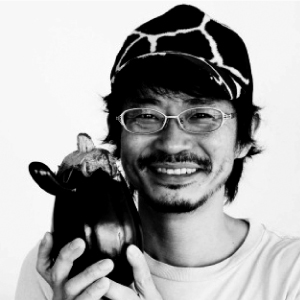
Tadasu Takamine
Contemporary artist / theater director.
Born in Kagoshima in 1968 and lives in Akita. Graduated from the lacquer work department of Kyoto City University of Arts and Music, and the Institute of Advanced Media Arts and Science (IAMAS) in Gifu. Much of Takamine’s work awakens a feeling of non-verbal compassion and sympathy in the viewer through installations, media art techniques, and performances that emphasize the bi-directional relationship between a work and its audience. His practice also deals with issues related to American imperialism, the sexuality of handicapped persons, and issues facing foreign residents in Japan, highlighting the complex relationships between authority and subject, those implicated within a particular situation, and those who are not, often prompting the viewer towards a process of self-questioning. His works have been highly acclaimed both in Japan and abroad. Takamine participated in the Venice Biennale in 2003, and his solo show “Too Far to See” toured three Japanese museums between 2011 and 2012. He is also the author of “A Lover from Korea” (Kawade Shobo Shinsha,2008), a novel that examines issues related to identity and nationalism through his own personal relationship with an ethnic Korean woman resident in Japan, and an incident that took place at a manganese mine in Kyoto, where Takamine wrote the work.
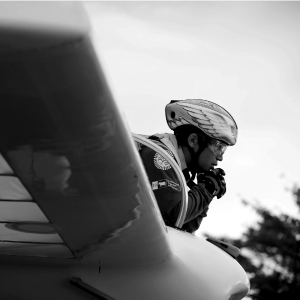
Kazuhiko Hachiya
Media artist
Artist born on Invention Day, April 18, 1966. Graduated from the Kyushu Institute of Design (today the School of Design, Kyushu University), Department of Visual Communication Design, and found employment at a consulting firm. Later founded PetWORKs Co., Ltd., where he is still active today. Works include such communication tools as Inter Dis-Communication Machine and PostPet, as well as the AirBoard, a jet engine powered skateboard, and the OpenSky project in which he built a real “Möwe” aircraft. Many of his works are actually functioning devices. Associate professor at the Department of Intermedia Art, Tokyo University of the Arts, since October 2010.
Photo: Yuki Yonekura
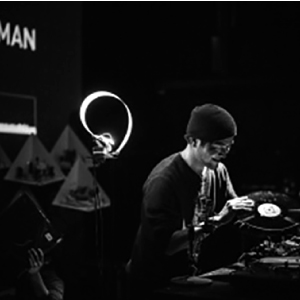
Nao Tokui
Artist, researcher.
Received his Doctor of Engineering from the Department of Electrical Engineering and Information Systems, Graduate School of Engineering, The University of Tokyo. Following his experience as a visiting researcher at the Sony Computer Science Laboratories in Paris, he established Qosmo in 2009. Has been exploring possibilities regarding the expansion of creativity based on a coexistence of AI and humans. Recent activities include the production of an AI-based music video for Brian Eno. As part of his “AI DJ” project, Tokui and an artificial DJ take turns spinning music in DJ performances in and outside Japan.
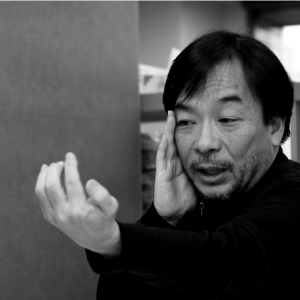
Masaki Fujihata
Media artist
A pioneer in media art, he attracted attention with the exhibition of such computer graphics-based works as Mandala 1983 and MIROKU_Maitreya at SIGGRAPH and other occasions in the 1980s. Following the subsequent Geometric Love and Forbidden Fruits, sculptures made using a computer, in the ‘90s he presented the interactive Beyond Pages, which was included in the collection of the ZKM in Karlsruhe, Germany, in 1998. In 1996, Fujihata was the first Japanese to receive a Golden Nica at the Ars Electronica Festival in Linz, Austria, for his Global Interior Project #2. The highly rated “Field-Works” series that continued from 1992’s Impressing Velocity through 2012’s Voices of Aliveness was a continuous exploration of new possibilities in recording and memory, focusing on the establishment of connections between real and virtual spaces through videos with added positional information (via GPS). The archive book “anarchive #6 Masaki Fujihata”, which allowed readers to browse through his main works from the 1970s up to the present using AR technology, was published in France in 2016. Currently in progress in Hong Kong is BeHere, a project themed around memory and identity in which Fujihata recreates contents of archive recordings by way of photogrammetry and AR. Retired early from his post at Tokyo University of the Arts in 2015. Was appointed visiting professor at the University of Art and Design Linz in 2017, and at Hong Kong Baptist University in 2018.
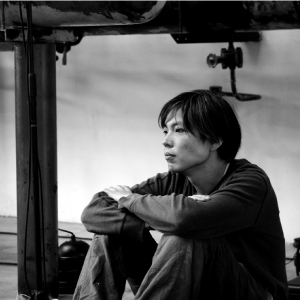
Tetsuya Umeda
Umeda works widely both domestically and internationally, creating experience-oriented, site-specific installations that intertwine time and spatial relationships with natural phenomena. Recent exhibitions include: “Double Vision: Contemporary Art from Japan” (Moscow Museum of Modern Art/Haifa Museum of Art), “Sapporo International Art Festival”, and recent solo exhibitions include: “See, Look at Observed what Watching is” (Portland Institute for Contemporary Art). He makes theatrical work that focuses on the functions of the physical theater, and decentralized chorus projects, through which he collaborates with the local people, and has had his work performed at several performance festivals such as “Kunstenfestivaldesarts” (Brussels), and “Our Masters” (Asia Culture Center).
Artist’s website: siranami.com
Photo: Bea Borgers